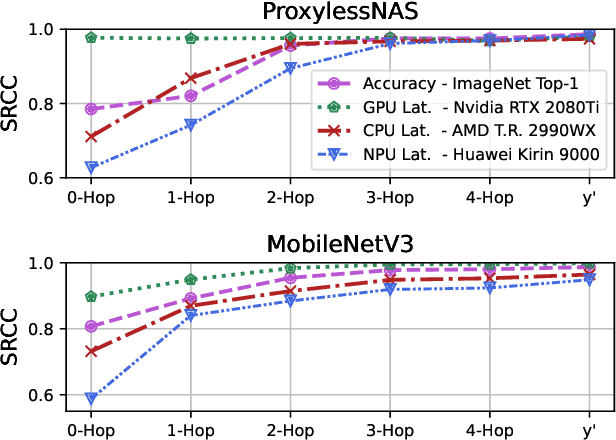Shengyao Lu
TreeX: Generating Global Graphical GNN Explanations via Critical Subtree Extraction
Mar 12, 2025Abstract:The growing demand for transparency and interpretability in critical domains has driven increased interests in comprehending the explainability of Message-Passing (MP) Graph Neural Networks (GNNs). Although substantial research efforts have been made to generate explanations for individual graph instances, identifying global explaining concepts for a GNN still poses great challenges, especially when concepts are desired in a graphical form on the dataset level. While most prior works treat GNNs as black boxes, in this paper, we propose to unbox GNNs by analyzing and extracting critical subtrees incurred by the inner workings of message passing, which correspond to critical subgraphs in the datasets. By aggregating subtrees in an embedding space with an efficient algorithm, which does not require complex subgraph matching or search, we can make intuitive graphical explanations for Message-Passing GNNs on local, class and global levels. We empirically show that our proposed approach not only generates clean subgraph concepts on a dataset level in contrast to existing global explaining methods which generate non-graphical rules (e.g., language or embeddings) as explanations, but it is also capable of providing explanations for individual instances with a comparable or even superior performance as compared to leading local-level GNN explainers.
EiG-Search: Generating Edge-Induced Subgraphs for GNN Explanation in Linear Time
May 02, 2024Abstract:Understanding and explaining the predictions of Graph Neural Networks (GNNs), is crucial for enhancing their safety and trustworthiness. Subgraph-level explanations are gaining attention for their intuitive appeal. However, most existing subgraph-level explainers face efficiency challenges in explaining GNNs due to complex search processes. The key challenge is to find a balance between intuitiveness and efficiency while ensuring transparency. Additionally, these explainers usually induce subgraphs by nodes, which may introduce less-intuitive disconnected nodes in the subgraph-level explanations or omit many important subgraph structures. In this paper, we reveal that inducing subgraph explanations by edges is more comprehensive than other subgraph inducing techniques. We also emphasize the need of determining the subgraph explanation size for each data instance, as different data instances may involve different important substructures. Building upon these considerations, we introduce a training-free approach, named EiG-Search. We employ an efficient linear-time search algorithm over the edge-induced subgraphs, where the edges are ranked by an enhanced gradient-based importance. We conduct extensive experiments on a total of seven datasets, demonstrating its superior performance and efficiency both quantitatively and qualitatively over the leading baselines.
* 19 pages
Building Optimal Neural Architectures using Interpretable Knowledge
Mar 20, 2024



Abstract:Neural Architecture Search is a costly practice. The fact that a search space can span a vast number of design choices with each architecture evaluation taking nontrivial overhead makes it hard for an algorithm to sufficiently explore candidate networks. In this paper, we propose AutoBuild, a scheme which learns to align the latent embeddings of operations and architecture modules with the ground-truth performance of the architectures they appear in. By doing so, AutoBuild is capable of assigning interpretable importance scores to architecture modules, such as individual operation features and larger macro operation sequences such that high-performance neural networks can be constructed without any need for search. Through experiments performed on state-of-the-art image classification, segmentation, and Stable Diffusion models, we show that by mining a relatively small set of evaluated architectures, AutoBuild can learn to build high-quality architectures directly or help to reduce search space to focus on relevant areas, finding better architectures that outperform both the original labeled ones and ones found by search baselines. Code available at https://github.com/Ascend-Research/AutoBuild
GOAt: Explaining Graph Neural Networks via Graph Output Attribution
Jan 26, 2024Abstract:Understanding the decision-making process of Graph Neural Networks (GNNs) is crucial to their interpretability. Most existing methods for explaining GNNs typically rely on training auxiliary models, resulting in the explanations remain black-boxed. This paper introduces Graph Output Attribution (GOAt), a novel method to attribute graph outputs to input graph features, creating GNN explanations that are faithful, discriminative, as well as stable across similar samples. By expanding the GNN as a sum of scalar products involving node features, edge features and activation patterns, we propose an efficient analytical method to compute contribution of each node or edge feature to each scalar product and aggregate the contributions from all scalar products in the expansion form to derive the importance of each node and edge. Through extensive experiments on synthetic and real-world data, we show that our method not only outperforms various state-ofthe-art GNN explainers in terms of the commonly used fidelity metric, but also exhibits stronger discriminability, and stability by a remarkable margin.
R5: Rule Discovery with Reinforced and Recurrent Relational Reasoning
May 13, 2022



Abstract:Systematicity, i.e., the ability to recombine known parts and rules to form new sequences while reasoning over relational data, is critical to machine intelligence. A model with strong systematicity is able to train on small-scale tasks and generalize to large-scale tasks. In this paper, we propose R5, a relational reasoning framework based on reinforcement learning that reasons over relational graph data and explicitly mines underlying compositional logical rules from observations. R5 has strong systematicity and being robust to noisy data. It consists of a policy value network equipped with Monte Carlo Tree Search to perform recurrent relational prediction and a backtrack rewriting mechanism for rule mining. By alternately applying the two components, R5 progressively learns a set of explicit rules from data and performs explainable and generalizable relation prediction. We conduct extensive evaluations on multiple datasets. Experimental results show that R5 outperforms various embedding-based and rule induction baselines on relation prediction tasks while achieving a high recall rate in discovering ground truth rules.
 Add to Chrome
Add to Chrome Add to Firefox
Add to Firefox Add to Edge
Add to Edge